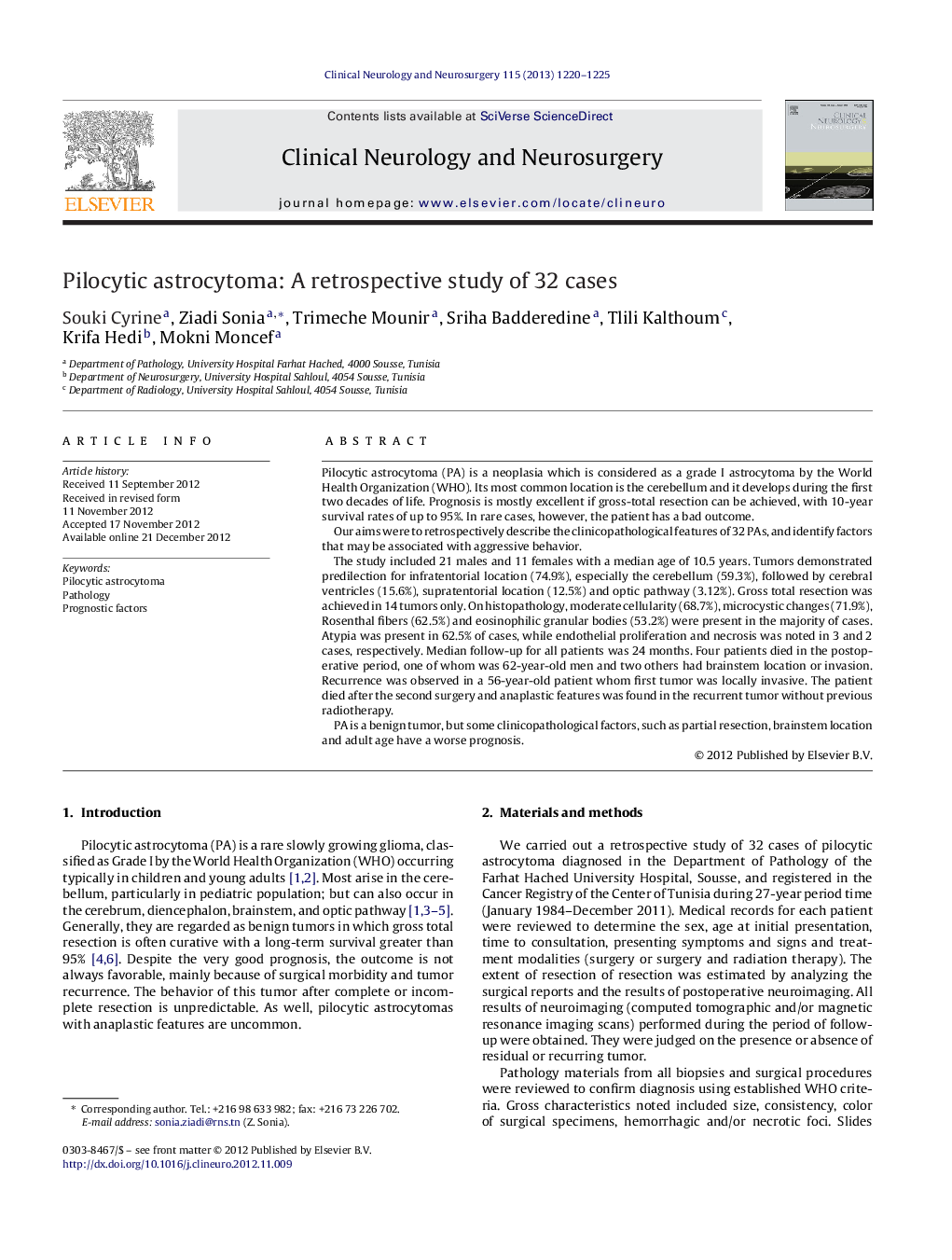| Article ID | Journal | Published Year | Pages | File Type |
|---|---|---|---|---|
| 6006852 | Clinical Neurology and Neurosurgery | 2013 | 6 Pages |
Pilocytic astrocytoma (PA) is a neoplasia which is considered as a grade I astrocytoma by the World Health Organization (WHO). Its most common location is the cerebellum and it develops during the first two decades of life. Prognosis is mostly excellent if gross-total resection can be achieved, with 10-year survival rates of up to 95%. In rare cases, however, the patient has a bad outcome.Our aims were to retrospectively describe the clinicopathological features of 32 PAs, and identify factors that may be associated with aggressive behavior.The study included 21 males and 11 females with a median age of 10.5 years. Tumors demonstrated predilection for infratentorial location (74.9%), especially the cerebellum (59.3%), followed by cerebral ventricles (15.6%), supratentorial location (12.5%) and optic pathway (3.12%). Gross total resection was achieved in 14 tumors only. On histopathology, moderate cellularity (68.7%), microcystic changes (71.9%), Rosenthal fibers (62.5%) and eosinophilic granular bodies (53.2%) were present in the majority of cases. Atypia was present in 62.5% of cases, while endothelial proliferation and necrosis was noted in 3 and 2 cases, respectively. Median follow-up for all patients was 24 months. Four patients died in the postoperative period, one of whom was 62-year-old men and two others had brainstem location or invasion. Recurrence was observed in a 56-year-old patient whom first tumor was locally invasive. The patient died after the second surgery and anaplastic features was found in the recurrent tumor without previous radiotherapy.PA is a benign tumor, but some clinicopathological factors, such as partial resection, brainstem location and adult age have a worse prognosis.
